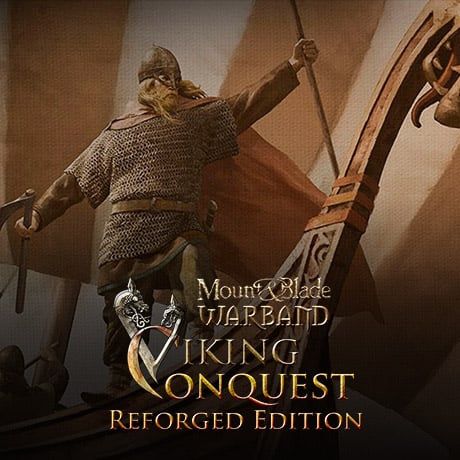AWdeV
Duke

Help! I'm an idiot and got in an argument with an idiot! We were discussing a fictional material to be made into swords and he claims the material is particularily suited for katanas and I think he is wrong but I'm not sure and I really don't know how to explain! Please Taleworlds, give me metallo-technological mumbo-jumbo so I know what I am saying!
WHATTOSAY. WHATTODOOO.
It would cut pretty good, yes, but ultimately when you're cutting things it's about spreading your target. Thick armor works well because a sword would have to first slice through the thickness, then it would need to actually force apart the armor to attain any more depth. You're basically using your sword as a wood splitting wedge or the Jaws of Life. Adamantine would have a lot of sharpness, but wouldn't quite have the energy to spread armor apart. If you core it with something heavy and give it an adamantine edge, then you impart a lot more force and you're much more likely to achieve deep penetration.
Of course this mainly applies to swinging weapons. Thrusting spears would manage you work fairly well, as you can put the whole weight of your body behind your thrust - and preferably use the enemy's momentum as well - to get in the kenetic energy and spread a small section, then it's a uniform diameter shaft that doesn't need to push apart any more armor.
Of course all of this applies to flesh and bone as well, just that these are easier to spread. Same ideas still apply.
Of course this mainly applies to swinging weapons. Thrusting spears would manage you work fairly well, as you can put the whole weight of your body behind your thrust - and preferably use the enemy's momentum as well - to get in the kenetic energy and spread a small section, then it's a uniform diameter shaft that doesn't need to push apart any more armor.
Of course all of this applies to flesh and bone as well, just that these are easier to spread. Same ideas still apply.
Sounds like adamantine would make an excellent katana, or wakizashi. Unlike western swords and knives, these two are thin, fragile, and not meant for "cleaving". They work based on the pressure exerted against the blade, and the energy with which it is drawn across the target surface. Basically, they work like a very fine, very very sharp sawblade.
An impossibly light, rigid, hard, and sharp material like adamantine would let you slice somebody literally in half anime style with a katana, because you could literally make it paper thin, and still exert your full swing strength\speed with it without worrying about it folding over, whipping around, wobbling, and all the other things that plague a sword.
A rotating serrated disc trap made of the stuff would be unbelievable.
An impossibly light, rigid, hard, and sharp material like adamantine would let you slice somebody literally in half anime style with a katana, because you could literally make it paper thin, and still exert your full swing strength\speed with it without worrying about it folding over, whipping around, wobbling, and all the other things that plague a sword.
A rotating serrated disc trap made of the stuff would be unbelievable.
Basically they work like a sword. You, simply put, clobber people with it. Or you skewer them with it. You do not saw them with it. You need teeth for proper sawing.
And I don't think that, even with adamantine, you could cut people in twain. It's amusing, yeah, but not very viable. There's more to it than just the sharpness/wobbliness of the blade. Maybe you could cut someone in half if you held them taut on something like a vertical torture rack.
Also, having a "razor" edge on a sword is a waste and useless.
Alsoalso I doubt it is possible to have anything "a" molecule thick. But then I'm not a scientastic person. How thick is a molecule?
And I don't think that, even with adamantine, you could cut people in twain. It's amusing, yeah, but not very viable. There's more to it than just the sharpness/wobbliness of the blade. Maybe you could cut someone in half if you held them taut on something like a vertical torture rack.
Also, having a "razor" edge on a sword is a waste and useless.
Alsoalso I doubt it is possible to have anything "a" molecule thick. But then I'm not a scientastic person. How thick is a molecule?
A katana is a sawing weapon, Really. It has microscopic serrations. Unlike a claymore, longsword, etc, a katana is "Drawn" over the object to be sliced, much like a good kitchen knife. (Western swords "Cleave", like a meat cleaver.) Katana are not used to strike one another in the fashion that a western fencing sword is. Katana have 2 distinct types of metal used in construction, and the cutting edge is VERY VERY FRAGILE. (A curse from feudal japan is "May your sword shatter and break") Katana have only 1 cutting edge. The other is blunt, and made of mild, low carbon steel. When using the katana to deflect a blow, this blunt side is offered to the incoming blade, in the attempt to shatter the enemy blade. This 2 metal composition is what causes the sword's unique bowed shape. (The two metals have different modulus of elasticity, and different rates of thermal contraction.)
Due to the fragility of high carbon steels, a katana needs to be "Folded" and "Laminated". Basically, this means that part of the structural integrity of the blade is maintaned by the softer, mild steel in the back part of the blade, because it is folded in with the high carbon, fragile steel in layers. The mild steel bulks up the blade, but makes it so that it wont shatter if it strikes poorly, and gives it a little flexibility it otherwise wouldn't have.
Imaginary Adamantine does not suffer a high fragility, like high carbon steel. As such, it wouldnt need lamination, could be made absurdly thin, and could be used absurdly fast. It would be like giving "Super paper cuts" rather than "Chopping".
Basically, a super paper-thin nano-serrated razorblade that never goes dull, and is 5ft long. Due to not needing to be laminated, and not needing a deflecting edge because the cutting edge cant shatter, it would\could be a 2-edged straight sword. (Though curved would permit easier use.)
Due to the fragility of high carbon steels, a katana needs to be "Folded" and "Laminated". Basically, this means that part of the structural integrity of the blade is maintaned by the softer, mild steel in the back part of the blade, because it is folded in with the high carbon, fragile steel in layers. The mild steel bulks up the blade, but makes it so that it wont shatter if it strikes poorly, and gives it a little flexibility it otherwise wouldn't have.
Imaginary Adamantine does not suffer a high fragility, like high carbon steel. As such, it wouldnt need lamination, could be made absurdly thin, and could be used absurdly fast. It would be like giving "Super paper cuts" rather than "Chopping".
Basically, a super paper-thin nano-serrated razorblade that never goes dull, and is 5ft long. Due to not needing to be laminated, and not needing a deflecting edge because the cutting edge cant shatter, it would\could be a 2-edged straight sword. (Though curved would permit easier use.)
WHATTOSAY. WHATTODOOO.













